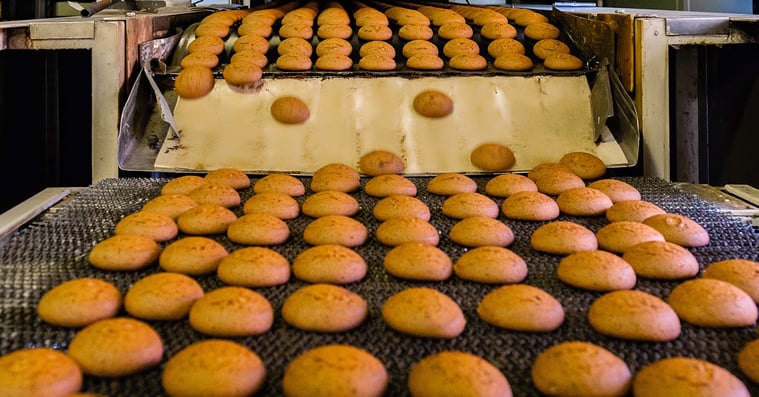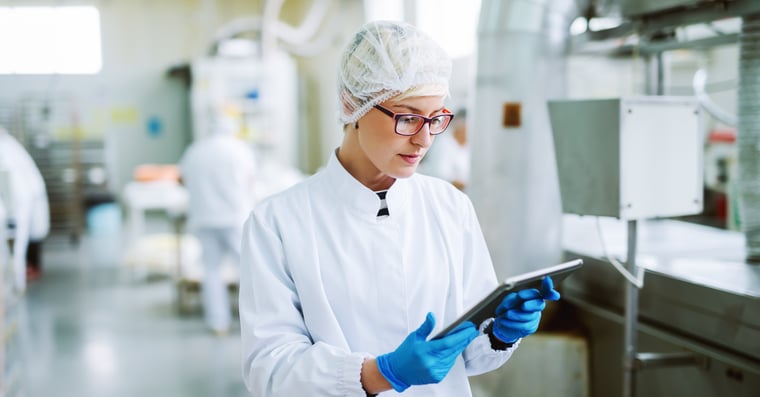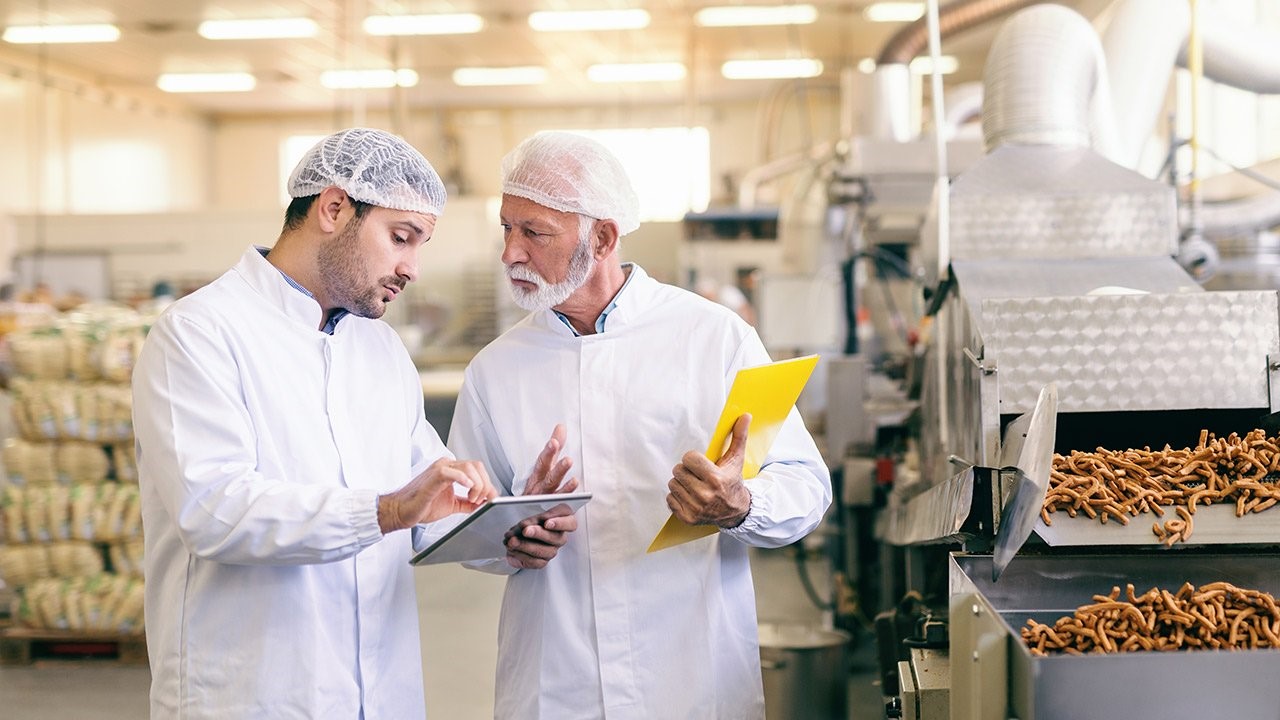Today’s consumers want more from their food and drink buying experience. For example, heightened outlooks around sustainability has raised awareness about what they’re buying, from its origin to the journey it took to get to their basket.
There are also the disruptions from fragmented supply chains to consider, meaning food businesses need to look towards better management and control over their production lines. Here, we explore the technologies shaping the future of the food industry.
1. Wider use of automation
With the ability to operate 24/7 compared to your human workforce, automated technology improves efficiency and reduces errors within production lines. For instance, monotonous jobs such as labelling and packing can be automated, allowing your team to prioritise your more important tasks. Here are a few more benefits of automation in the food industry…
Helps combat the workforce shortage crisis
The Food Labour Market Survey 2022 found that nearly half (49%) of UK food manufacturers have reduced their output due to labour shortages, despite coming out of the pandemic. Unfilled gaps in your workforce can lead to delays within your production lines, resulting in less efficiency. However, with automated technology in place, you can:
- Maintain production quality and output while reducing the risk of any human-related errors
- Automate new tasks to keep compliant, which also reduces the burden on your employees

Improved safety for your workforce
Automation can handle dangerous tasks such as meat cutting, reducing the risk of injury to your workforce. This helps you provide a safer working environment for your team while simultaneously accelerating production.
Respond quickly to changes in legislation
Changes in legislation usually require food businesses to adapt their processes to meet new guidelines. For example, Natasha’s Law, which came into force in October 2021, made it a legal requirement for all businesses to provide a full ingredients list on every pre-packed product.
By using software that has been specifically designed for food labelling, you can automate nutrition profile calculations including allergen information, reducing the chances of human error.
2. Waste management processes
It’s estimated 9.5 million tonnes of food was wasted during 2021 in the UK alone, highlighting the fact that businesses need to better manage their loss and waste.
End-to-end solutions, such as food ERP software, can manage supply and demand throughout the entire supply chain. Software integrations means ERP software can use historic and current data to make accurate predictions on how much supply to intake to meet expected demand levels.
This can also put your food business on a more sustainable path. For example, less product that’s leftover means less will end up in landfill and the fewer deliveries you’ll have to make, helping you reduce emissions and improve your carbon footprint.
3. AI to gain in-depth insights
With increased pressure on food manufacturers and distributors to provide high quality food at increased volumes, AI plays a major role to help monitor production performance. For example, IoT devices can automatically collect data on your machinery performance against how should be performing, saving your teams time as they won’t need to monitor performance manually.
Another benefit is this vital data automatically transfers over to your ERP system. This not only eliminates the need for manual data inputting, but it also centralises the information so anybody within the business can access any data with ease.

Although introducing these three technologies will help you mitigate industry challenges and boost your efficiency, you’ll also need to ensure your people are on board with any changes they’ll likely bring to your processes. To do this, you need an effective change management strategy…
How to create effective change management strategy
Due to the scope of your transformation project, from the timeframe and financial backing required, you’ll want to ensure that the entire process runs as smooth as possible from start to finish. Here are three tips you can use to create an effective change management strategy for your food business:
Encourage stakeholder buy-in
Whether you’re a small or large business, you’ll need to communicate why the change is happening. After all, not every employee will be a fan of change. By understanding your workforces’ motivations and concerns regarding this, you can explain how it’ll benefit them personally, encouraging buy-in.
You should also have a culture of innovation. The more involvement you receive with your project, the more effective it’ll be. Therefore, by allowing different stakeholder groups to share their opinions about the change, it'll generate a greater sense of collaboration, making every employee feel valued. You can read more about this here.

Have a training strategy in place
As this will likely affect all of your employees, they'll need to know how it’ll change their day-to-day tasks, and the best practices of using the new software. For example, with an ERP system within your production lines, your teams should understand how to navigate the user interface to find the information they’re after.
By training your teams through workshops, practical sessions, and online courses, you can keep them engaged and ensures they know how to use the system when it goes live.
Create a structured change journey
Depending on your stakeholders, you should recognise how the change will impact them differently, tailoring your strategy to match each group, from your employees to your suppliers. You should consider:
- Hurdles they’ll likely face and the best approach to overcome them
- Activities to boost and encourage engagement before, during, and after implementation
- How their mindset will change before and after going live

From this, you’ll gain clarity on the best and worst-case scenarios before making any changes within your operations, making you more prepared to deal with any adversities you may experience.
In our change management roadmap, you can find out our recommended approach to manage change, helping you boost employee adoption and utilisation rates with your implementation. We also cover:
- How you can promote your change visions
- How to assess the impact your change is going to have
Download it below.
Learn more about the technologies driving the food industry today
With the food industry experiencing increased disruption over the past couple of years, it’s evident technology is allowing businesses to become more efficient, adaptable, and resilient. In our guide, we explore:
- The rising consumer and technological trends
- The importance of choosing the right technology for your specific needs
- Business value and why food businesses need to look beyond system implementations
Interested? Get your copy below.


